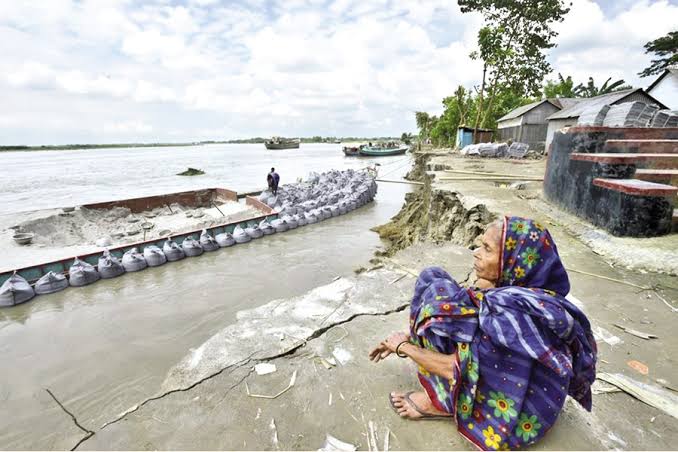
Published :
Updated :

Poverty has many faces that elude common perception and even targeted survey and research. Questionnaires prepared for statistical study can present a generalised picture of sources of income, household expenditure, food insecurity and overall living condition of a community living in a certain locality. But they cannot precisely capture the variations among households such as those with children or no children including boys or girls and the ones where bread winners and members of families suffer from frequent ill health. Yet surveys and research are conducted to know some common problems facing the population of certain vulnerable groups in order to lessen their sufferings or improve their socio-economic conditions. One such survey was undertaken by the Bangladesh Institute of Development Studies (BIDS) to develop a climate-induced poverty map of vulnerable areas alongside Dhaka. The frontline vulnerable districts are Bandarban, Khulna, Rangpur and Sylhet. Why not one of the districtslike Patuakhali, Pirojpur, Barguna, Barishal or Cox's Bazar was selected is beyond comprehension.
If climate vulnerability is in focus for determining its special impact on people's life in particular areas, river erosion with its repetitive devastation and unpredictability has so far remained the leading cause for human displacement. But the localised misery of people in places like Bhobodah and Keshabpur in Jassore and Khulna can far outstrip if the frequency of cyclones like Sidr, Aila and Amphan continue to ravage the coastal belts. It can also happen if the sea level rises due to an increase in temperature causing polar ice to melt abnormally. However, the study titled "Small Area Estimates of Poverty 2022: Trends and Disparities in Selected Districts, 2024" has revealed that poverty has worsened in some districts during the period between 2022 and 2024. Significantly, of the 23.11 per cent households found to wallow below the upper poverty line, rural poverty was acuter at 24.67 while urban poverty in those districts stayed at 20.43 per cent.
This is evident enough that even acuter poverty is uneven not only in different areas of the country but also in settings depending on the rural-urban divide. No wonder that in general rural areas report higher dissatisfaction about life. Against the rate of 72.96 per cent dissatisfied rural people, this rate is 64.49 per cent among urban population. This provides sociologists, economists and political leaders with crucial information about demographic constituents in order to closely collaborate for reducing or even eliminating localised or regional discriminations.
Different localities have their opportunities and distresses depending on their locations. The remote and far-flung areas have to face several adversities but if the local administration is empowered to get those areas connected to the nearest urban centres and developed on the basis of the local population's employability, their livelihood problem can be greatly addressed. In the Bengal of post-British era, each village was more or less self-sufficient— producing most of their daily necessaries, notwithstanding the absence of easy and smooth communication. Strengthening the local government and through it creation of right opportunities for the population of the locality can bring about a required change in the uneven pattern of development. This is how the rallying call of the July-August uprising for establishing a discrimination-free Bangladesh can find its authentication in practice.


 For all latest news, follow The Financial Express Google News channel.
For all latest news, follow The Financial Express Google News channel.